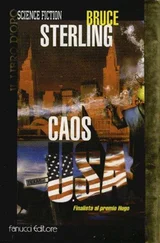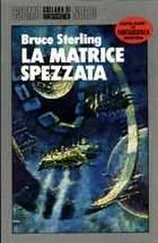Bruce Sterling - Essays. FSF Columns
Здесь есть возможность читать онлайн «Bruce Sterling - Essays. FSF Columns» весь текст электронной книги совершенно бесплатно (целиком полную версию без сокращений). В некоторых случаях можно слушать аудио, скачать через торрент в формате fb2 и присутствует краткое содержание. Жанр: Фантастика и фэнтези, на английском языке. Описание произведения, (предисловие) а так же отзывы посетителей доступны на портале библиотеки ЛибКат.
- Название:Essays. FSF Columns
- Автор:
- Жанр:
- Год:неизвестен
- ISBN:нет данных
- Рейтинг книги:3 / 5. Голосов: 1
-
Избранное:Добавить в избранное
- Отзывы:
-
Ваша оценка:
- 60
- 1
- 2
- 3
- 4
- 5
Essays. FSF Columns: краткое содержание, описание и аннотация
Предлагаем к чтению аннотацию, описание, краткое содержание или предисловие (зависит от того, что написал сам автор книги «Essays. FSF Columns»). Если вы не нашли необходимую информацию о книге — напишите в комментариях, мы постараемся отыскать её.
Essays. FSF Columns — читать онлайн бесплатно полную книгу (весь текст) целиком
Ниже представлен текст книги, разбитый по страницам. Система сохранения места последней прочитанной страницы, позволяет с удобством читать онлайн бесплатно книгу «Essays. FSF Columns», без необходимости каждый раз заново искать на чём Вы остановились. Поставьте закладку, и сможете в любой момент перейти на страницу, на которой закончили чтение.
Интервал:
Закладка:
There are anthills all over the world. They all work, but they're all different; no two anthills are identical. That's because they're built bottom-up and emergently. Anthills are built without any spark of planning or intelligence. An ant may feel the vague instinctive need to wall out the sunlight. It begins picking up bits of dirt and laying them down at random. Other ants see the first ant at work and join in; this is the A-Life principle known as "allelomimesis," imitating the others (or rather not so much "imitating" them as falling mechanically into the same instinctive pattern of behavior).
Sooner or later, a few bits of dirt happen to pile up together. Now there's a wall. The ant wall-building sub-program kicks into action. When the wall gets high enough, it's roofed over with dirt and spit. Now there's a tunnel. Do it again and again and again, and the structure can grow seven feet high, and be of such fantastic complexity that to draw it on an architect's table would take years. This emergent structure, "order out of chaos," "something out of nothing" -- appears to be one of the basic "secrets of life."
These principles crop up again and again in the practice of life- simulation. Predator-prey interactions. The effects of parasites and viruses. Dynamics of population and evolution. These principles even seem to apply to internal living processes, like plant growth and the way a bug learns to walk. The list of applications for these principles has gone on and on.
It's not hard to understand that many simple creatures, doing simple actions that affect one another, can easily create a really big mess. The thing that's *hard* to understand is that those same, bottom-up, unplanned, "chaotic" actions can and do create living, working, functional order and system and pattern. The process really must be seen to be believed. And computers are the instruments that have made us see it.
Most any computer will do. Oxford zoologist Richard Dawkins has created a simple, popular Artificial Life program for personal computers. It's called "The Blind Watchmaker," and demonstrates the inherent power of Darwinian evolution to create elaborate pattern and structure. The program accompanies Dr. Dawkins' 1986 book of the same title (quite an interesting book, by the way), but it's also available independently.
The Blind Watchmaker program creates patterns from little black-and-white branching sticks, which develop according to very simple rules. The first time you see them, the little branching sticks seem anything but impressive. They look like this:
Fig 1. Ancestral A-Life Stick-Creature
After a pleasant hour with Blind Watchmaker, I myself produced these very complex forms -- what Dawkins calls "Biomorphs."
Fig. 2 -- Six Dawkins Biomorphs
It's very difficult to look at such biomorphs without interpreting them as critters -- *something* alive-ish, anyway. It seems that the human eye is *trained by nature* to interpret the output of such a process as "life-like." That doesn't mean it *is* life, but there's definitely something *going on there.*
*What* is going on is the subject of much dispute. Is a computer-simulation actually an abstracted part of life? Or is it technological mimicry, or mechanical metaphor, or clever illusion?
We can model thermodynamic equations very well also, but an equation isn't hot, it can't warm us or burn us. A perfect model of heat isn't heat. We know how to model the flow of air on an airplane's wings, but no matter how perfect our simulations are, they don't actually make us fly. A model of motion isn't motion. Maybe "Life" doesn't exist either, without that real-world carbon-and-water incarnation. A-Life people have a term for these carbon-and-water chauvinists. They call them "carbaquists."
Artificial Life maven Rodney Brooks designs insect-like robots at MIT. Using A-Life bottom-up principles -- "fast, cheap, and out of control" -- he is trying to make small multi-legged robots that can behave as deftly as an ant. He and his busy crew of graduate students are having quite a bit of success at it. And Brooks finds the struggle over definitions beside the real point. He envisions a world in which robots as dumb as insects are everywhere; dumb, yes, but agile and successful and pragmatically useful. Brooks says: "If you want to argue if it's living or not, fine. But if it's sitting there existing twenty- four hours a day, three hundred sixty-five days of the year, doing stuff which is tricky to do and doing it well, then I'm going to be happy. And who cares what you call it, right?"
Ontological and epistemological arguments are never easily settled. However, "Artificial Life," whether it fully deserves that term or not, is at least easy to see, and rather easy to get your hands on. "Blind Watchmaker" is the A-Life equivalent of using one's computer as a home microscope and examining pondwater. Best of all, the program costs only twelve bucks! It's cheap and easy to become an amateur A-Life naturalist.
Because of the ubiquity of powerful computers, A-Life is "garage-band science." The technology's out there for almost anyone interested -- it's hacker-science. Much of A-Life practice basically consists of picking up computers, pointing them at something promising, and twiddling with the focus knobs until you see something really gnarly. *Figuring out what you've seen* is the tough part, the "real science"; this is where actual science, reproducible, falsifiable, formal, and rigorous, parts company from the intoxicating glamor of the intellectually sexy. But in the meantime, you have the contagious joy and wonder of just *gazing at the unknown* the primal thrill of discovery and exploration.
A lot has been written already on the subject of Artificial Life. The best and most complete journalistic summary to date is Steven Levy's brand-new book, ARTIFICIAL LIFE: THE QUEST FOR A NEW CREATION (Pantheon Books 1992).
The easiest way for an interested outsider to keep up with this fast-breaking field is to order books, videos, and software from an invaluable catalog: "Computers In Science and Art," from Media Magic. Here you can find the Proceedings of the first and second Artificial Life Conferences, where the field's most influential papers, discussions, speculations and manifestos have seen print.
But learned papers are only part of the A-Life experience. If you can see Artificial Life actually demonstrated, you should seize the opportunity. Computer simulation of such power and sophistication is a truly remarkable historical advent. No previous generation had the opportunity to see such a thing, much less ponder its significance. Media Magic offers videos about cellular automata, virtual ants, flocking, and other A-Life constructs, as well as personal software "pocket worlds" like CA Lab, Sim Ant, and Sim Earth. This very striking catalog is available free from Media Magic, P.O Box 507, Nicasio CA 94946.
"INTERNET" [aka "A Short History of the Internet"]
Some thirty years ago, the RAND Corporation, America's foremost Cold War think-tank, faced a strange strategic problem. How could the US authorities successfully communicate after a nuclear war?
Postnuclear America would need a command-and-control network, linked from city to city, state to state, base to base. But no matter how thoroughly that network was armored or protected, its switches and wiring would always be vulnerable to the impact of atomic bombs. A nuclear attack would reduce any conceivable network to tatters.
And how would the network itself be commanded and controlled? Any central authority, any network central citadel, would be an obvious and immediate target for an enemy missile. The center of the network would be the very first place to go.
RAND mulled over this grim puzzle in deep military secrecy, and arrived at a daring solution. The RAND proposal (the brainchild of RAND staffer Paul Baran) was made public in 1964. In the first place, the network would *have no central authority.* Furthermore, it would be *designed from the beginning to operate while in tatters.*
Читать дальшеИнтервал:
Закладка:
Похожие книги на «Essays. FSF Columns»
Представляем Вашему вниманию похожие книги на «Essays. FSF Columns» списком для выбора. Мы отобрали схожую по названию и смыслу литературу в надежде предоставить читателям больше вариантов отыскать новые, интересные, ещё непрочитанные произведения.
Обсуждение, отзывы о книге «Essays. FSF Columns» и просто собственные мнения читателей. Оставьте ваши комментарии, напишите, что Вы думаете о произведении, его смысле или главных героях. Укажите что конкретно понравилось, а что нет, и почему Вы так считаете.



